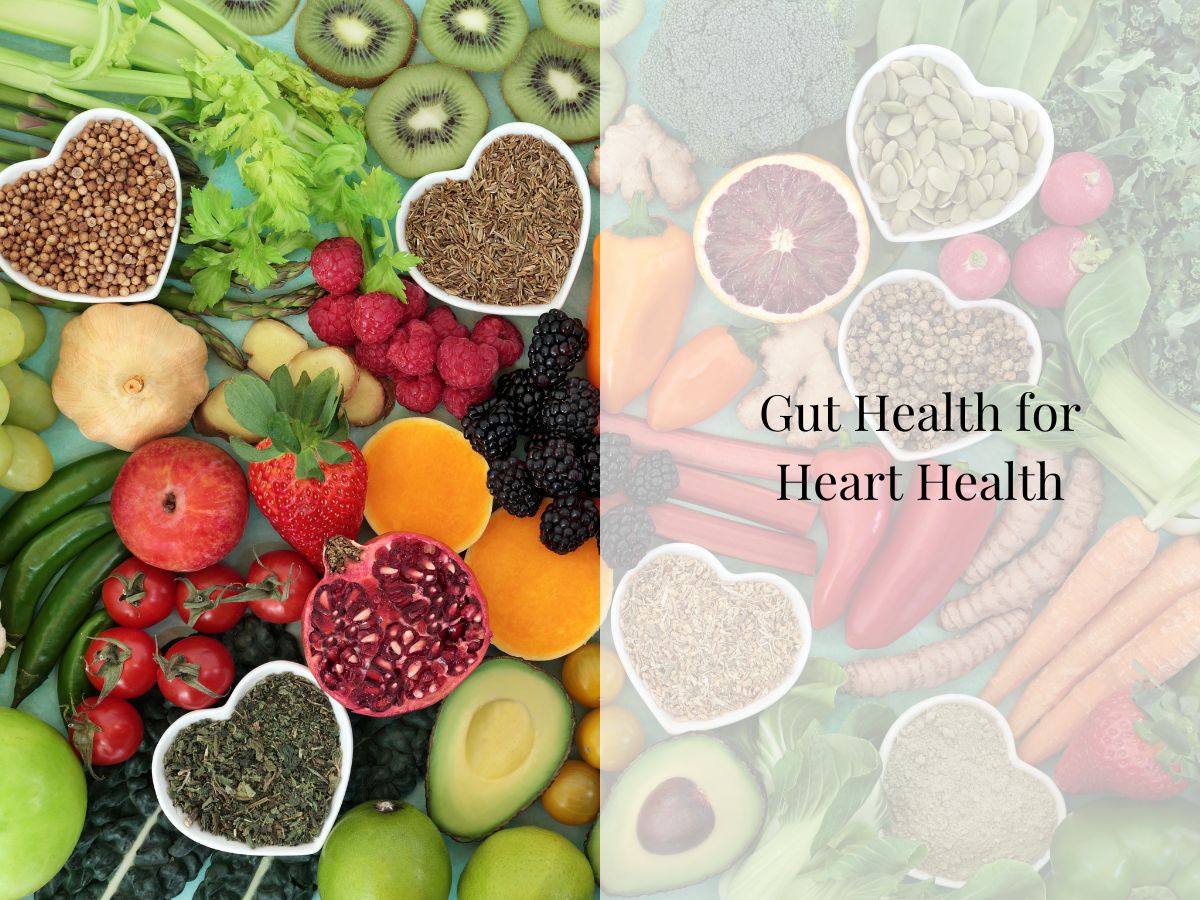

Simplifying FODMAP Foods and The Low FODMAP Diet
FODMAPs is an acronym for a group of fermentable carbohydrates that are often poorly digested and absorbed by people suffering from irritable bowel syndrome or IBS. Not all carbohydrates are considered FODMAPs, but many foods contain them.
In this post, we explain FODMAPs, why the Low FODMAP Diet helps control IBS symptoms, and how to implement the Low FODMAP Diet. We also clarify fructans, and gluten, which are both components of wheat, and how they relate to IBS, gluten sensitivity, and celiac disease. Cooking hacks, food swaps, and plenty of resources are provided.
FODMAPs and IBS
FODMAPs are also known as Fermentable, Oligosaccharides, Disaccharides, Monosaccharides, and Polyols. FODMAPs are poorly digested carbohydrates. They are also osmotic, which means they pull water into the intestinal tract. When the undigested FODMAPs move down to the colon, bacteria begin fermenting these carbohydrates creating gas. This extra fluid and gas can lead to a variety of irritable bowel syndrome symptoms including gas, bloating, nausea, motility issues, and/or cramping.
A team at Australia-based Monash University developed the low FODMAP diet. They provided the first evidence that a low FODMAP diet improves IBS symptoms. FODMAPs are in a wide variety of foods and in varying amounts. Some foods contain just one type like milk {lactose} while others like apples and cherries contain several {fructose and sorbitol}.
The complete list of high FODMAP foods is extensive and contains foods that are part of a balanced and healthy diet – fruits, vegetables, low-fat dairy, grains, nuts, and legumes. The most up-to-date, comprehensive list of high FODMAP foods can be found on the Monash University FODMAP Diet app. The app uses the traffic light system and rates foods as green (okay), yellow (caution), and red (avoid). See below for a few examples of high FODMAP foods.
- Oligosaccharides or fructan and GOS: garlic, onions, wheat, beans, cashews, pistachios
- Disaccharides or lactose: milk, ice cream, custard
- Monosaccharides or fructose: honey, high fructose corn syrup, apples, pears, mangos, dried fruit
- Polyols or sugar alcohols: sorbitol and mannitol
Fructan vs. Gluten
Both fructans and gluten are components of wheat.
Gluten is the protein found in wheat; gluten is also found in rye and barley. Gluten triggers an immune response in people with celiac disease. Their immune system attacks the villi found in the small intestine necessary for nutrient absorption. People with celiac disease must eat a lifelong gluten-free diet. It is important to be assessed for celiac disease before removing gluten entirely from your diet.
Fructans are the carbohydrate found in wheat. Gluten-free foods are commonly made from rice, corn, potato, and/or quinoa, which are all low FODMAPs. When following a Low FODMAP Diet, fructans, and other FODMAPs are restricted. Therefore, gluten-free breads and baked goods are generally low FODMAP. Keep in mind that gluten-free foods can also have high FODMAP ingredients like honey, onion, garlic, so make sure you check the ingredients carefully.
Fructans are poorly digested and absorbed in people with IBS. When celiac disease has been ruled out, people with IBS do not need to eat a strict gluten-free diet. Choosing a strict gluten-free diet when you only require a Low FODMAP Diet can lead to over-restriction.
For example, traditional sourdough bread contains gluten but is relatively low in FODMAPs making them suitable for a Low FODMAP Diet. Traditional sourdough uses a sourdough starter, which breakdowns the fructans during the fermentation process (1). Researchers have found that many people with a ‘gluten sensitivity’ really don’t tolerate FODMAP carbohydrates.
Can I have Celiac and IBS?
YES! Untreated celiac disease created absorption issues, which means there is plenty of extra food available to your intestinal bacteria or microbiome. This extra food allows the ‘bad guys’ to flourish creating dysbiosis or an environment that invites IBS. Yikes! It’s also possible to have just celiac without IBS, but if you are still experiencing symptoms despite a strict gluten-free diet IBS might be something to consider.
Three Steps to the Low FODMAP Diet
The Low FODMAP Diet has been clinically proven to relieve IBS symptoms in up to 75% of those suffering from IBS. As you can see it’s important to know what is causing your symptoms to ensure you are not restricting unnecessary foods.
There are 3 steps to a Low FODMAP Diet – Elimination, Reintroduction, and Personalization. A strict Low FODMAP Diet is not a forever diet, but a process that allows you to personalize your diet.
STEP 1 | Elimination
All high-FODMMAP foods are eliminated for 4-8 weeks.
STEP 2 | Reintroduction
High-FODMAP foods are reintroduced by category. Work with an RD to decide which FODMAP categories to introduce first. Be sure to keep a food diary or journal throughout the process
STEP 3 | Personalization
Well-tolerated FODMAP foods should be added back into your diet. Many people find that they only react to a few FODMAP categories instead of all. To create a sustainable solution, foods that are tolerated should be added back into the diet.
Cooking Hacks and Swaps
If you don’t know where to start, try my 4-week Low FODMAP meal plan. Cooking allows you to control all the ingredients in your food and my meal plan ensures you enjoy a variety of low FODMAP foods.
Top 4 Low FODMAP Cooking Hacks and Swaps
Make your low FODMAP meals tastier with these cooking hacks.
1. Infused garlic or onion oil
Why? Both garlic and onion are high in FODMAP, but FODMAPs are water-soluble. Only the flavor is absorbed into the oil, not the FODMAPs.
2. Green onion or scallion
Why? Based on Monash University lab testing, the green tops are low FODMAP. The green tops can be used to replace chopped onion. The onion bulb (white part) can be used in moderation. Testing shows that 2 tablespoons are low FODMAP.
3. Drain and rinse your canned beans, legumes, and beets
Why this works: FODMAPs are water soluble. When you drain and rinse canned goods a portion of the FODMAP is removed.
4. Portion size is key
Why? The FODMAP content is always relative to the portion size.
- ½ an avocado (~2.8 oz) is a high FODMAP food.
- ¼ an avocado is a moderate FODMAP food.
- 1/8 an avocado is a low FODMAP food.
- Always refer to the Monash University FODMAP Diet app. The app uses the traffic light system. Green=low FODMAP, Yellow=moderate FODMAP, and Red=high FODMAP
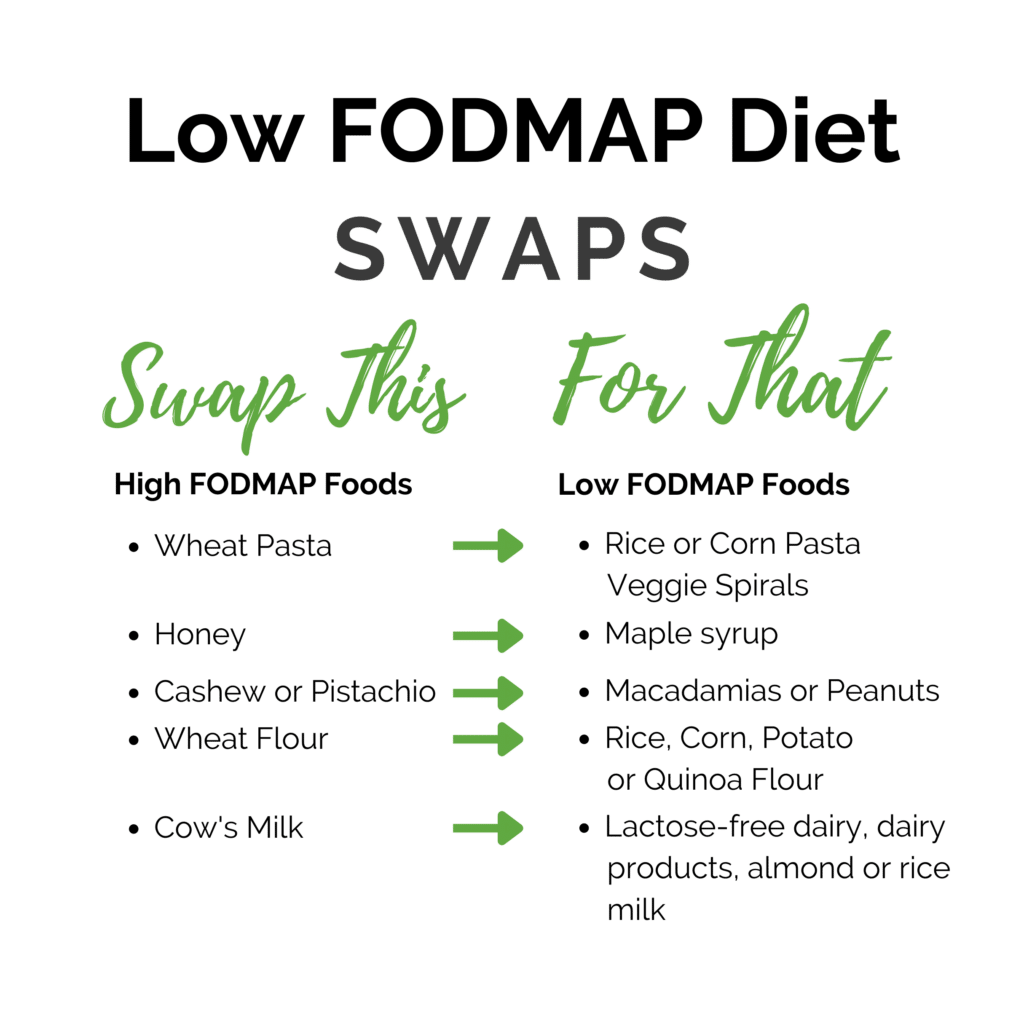
Additional Resources:
Pre-Made low FODMAP Meals by Modify Health
Fody Foods for low FODMAP products (check your grocery store too!)
Monash University Low FODMAP Diet App (available on any SmartPhone)
Bottom Line
The Low FODMAP Diet has been clinically proven to relieve IBS symptoms in up to 75% of those suffering from IBS. It’s important to rule out celiac disease before you go on a Low FODMAP or gluten-free diet. If you have celiac and follow a strict gluten-free diet, but you are still experiencing symptoms IBS might be something to consider.
A Low FODMAP Diet is not a forever diet, but a process that allows you to personalize your diet. To ensure the Low FODMAP Diet is done correctly, work with a registered dietitian. Understanding your food triggers can be critical when it comes to improving your health and quality of life.
To learn more about the Low FODMAP Diet, book a free discovery call with a dietitian obsessed with optimizing digestive health.
All Our Blogs


Surviving the Holiday Season: A Balanced Approach
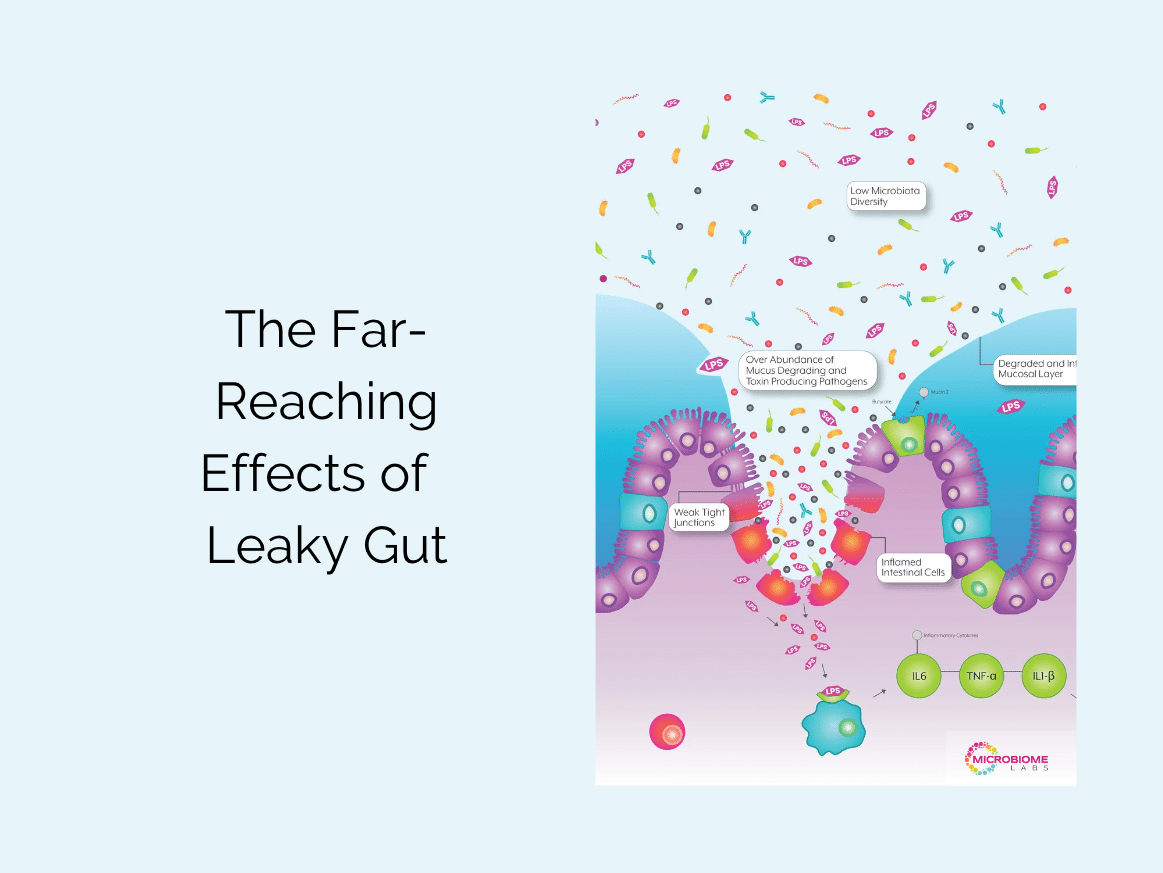
The Far-Reaching Effects of Leaky Gut
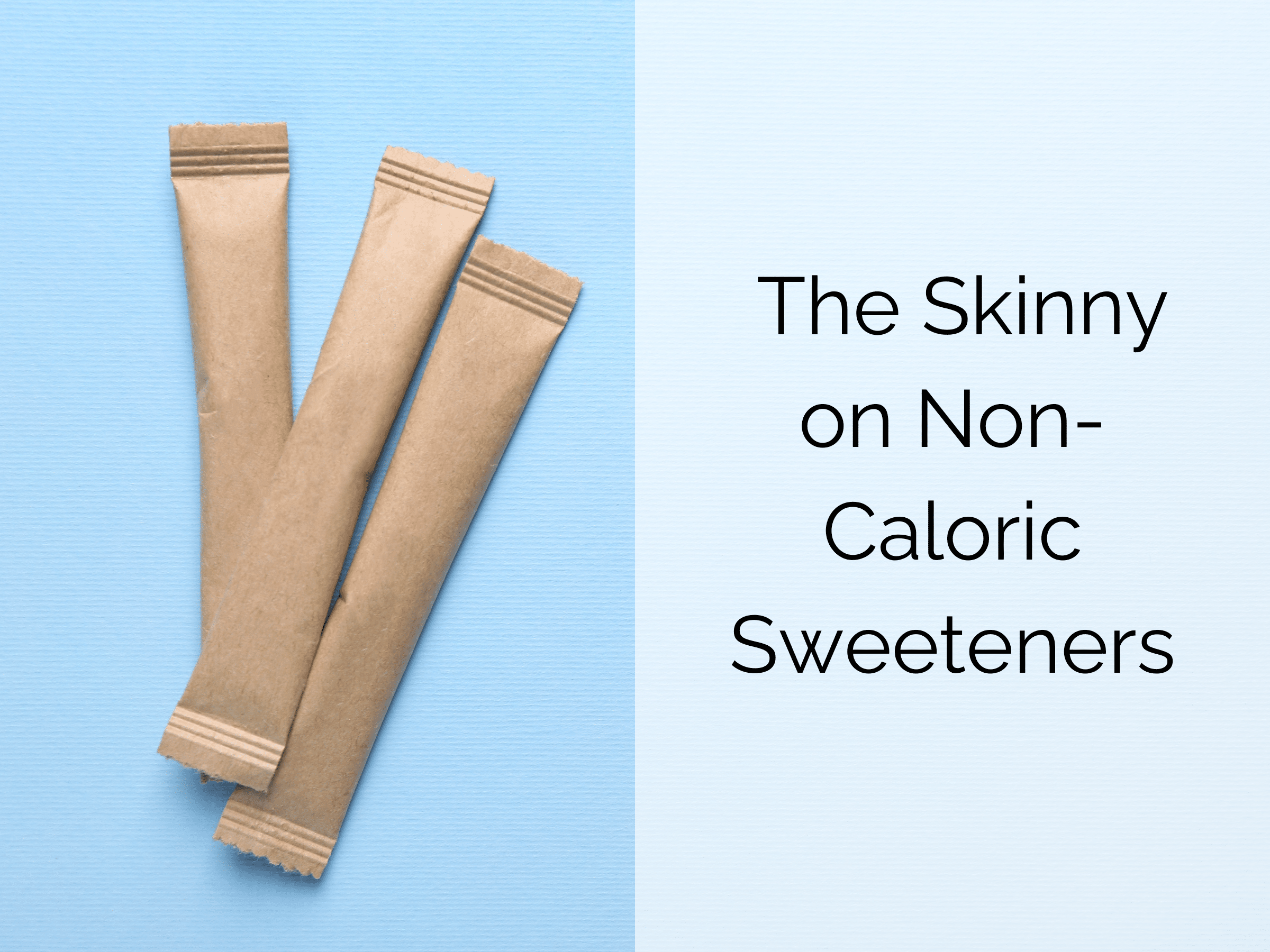
The Skinny on Non-Caloric Sweeteners
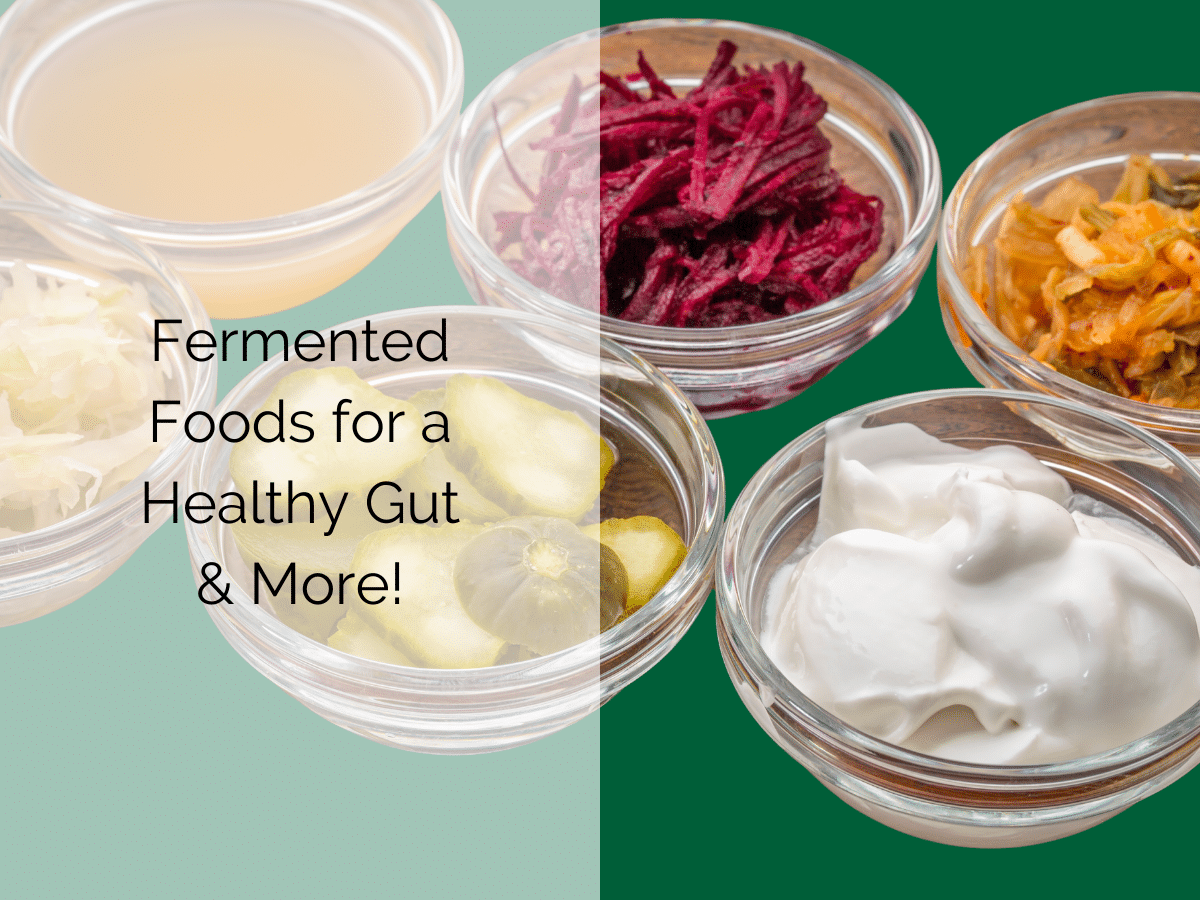
Fermented Foods for a Healthy Gut & More


